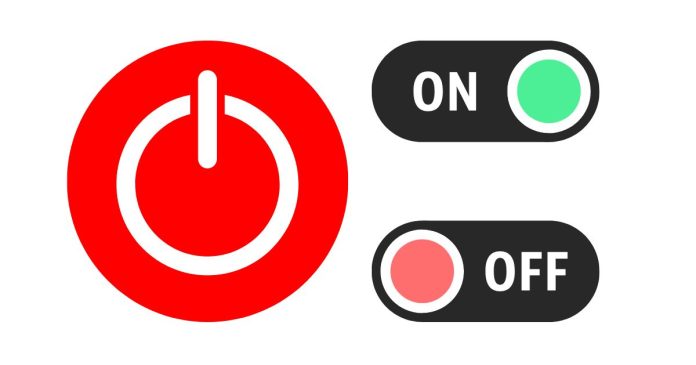The symbols for power—on and off—are some of the most universally recognized icons in the world of technology. These simple, yet highly effective, symbols are seen on everything from televisions and computers to household appliances and industrial machinery. But have you ever wondered why the “on” symbol is represented as a vertical line (“|”) and the “off” symbol as a circle with a break (“/”)? Let’s take a look at the history, reasoning, and significance behind these iconic symbols.
The Birth of the Power Symbols
The history of the power symbols traces back to the early days of electrical engineering and the development of electronics. In the 1970s, when digital systems and electronics were becoming more prevalent, the need for universal symbols for “on” and “off” states became evident. Engineers and designers wanted to create a simple, recognizable system for indicating power status that could transcend language barriers.
The symbols we use today were formally standardized by the International Electrotechnical Commission (IEC) in 1973. The IEC is a global organization that sets standards for electrical and electronic technologies, and they sought a universal way to represent power switches on electronic devices.
What Do the Symbols Mean?
Let’s break down the two symbols:
The “On” Symbol: “|” (Vertical Line)
The vertical line symbol (“|”) is used to represent the “on” state of a device. Its origin is quite simple but deeply rooted in logic and convention.
- Logical Significance: The vertical line represents the idea of electricity flowing or being complete. In electrical engineering, a line or circuit that is closed (not interrupted) is considered to be “on,” allowing current to flow freely. This is where the vertical line comes in—its simple appearance symbolizes the closed circuit, indicating that power is being supplied to the device.
- Minimalist Design: The vertical line is minimal yet effective. It is easy to recognize and looks similar to the shape of a power button, which makes it user-friendly and immediately recognizable.
The “Off” Symbol: “/” (Circle with a Break)
The “off” symbol, represented by a circle with a break or a slash through it (“/”), is used to signify the absence of power, or when a device is turned off.
- Logical Significance: The break in the circle represents the idea of an open circuit—one where electricity is interrupted or disconnected, and power is not flowing. By breaking the continuous loop, the symbol implies that the system is no longer powered.
- Historical Context: The slash through the circle was inspired by the traditional toggle switch designs, where the “on” position involved a switch that completed the circuit, and the “off” position disconnected it. This distinction is visually communicated by the slash, which effectively shows the disconnection of power.
Why Use These Symbols?
The use of “|” and “/” as the power symbols wasn’t just about simplicity; it also had a deep connection to how electronics functioned at the time. These symbols were chosen because they are:
- Universal: The symbols are clear and simple, transcending language and making them easily understood by people worldwide. In the early days of electronics, global communication was limited, and it was crucial to establish standardized, universally recognized symbols.
- Visually Intuitive: The vertical line (“|”) gives a sense of flow, implying that power is “on” and that current is passing through the system. On the other hand, the break in the circle (“/”) signifies that the circuit is open and power is “off,” helping users understand the state of their device with just a quick glance.
- Compact and Clear: As electronic devices shrank in size, the power symbols needed to fit neatly on small buttons and screens. The clean, minimalistic nature of “|” and “/” made them ideal for this purpose, without the need for lengthy text or complex designs.
Beyond the Power Button: The Evolution of Power Indicators
As technology progressed, the need for more advanced power management grew, and additional symbols came into play. For example, many devices now feature additional indicators like the standby symbol, which often looks like a circle with a line through it (a combination of the “on” and “off” symbols). These indicate a state where the device is powered but not fully active, saving energy while remaining ready for use.
Despite the addition of these new symbols, the original on (“|”) and off (“/”) signs remain the most universally recognized and frequently used. They have become icons, representing not only the state of power but also the broader shift toward standardized, user-friendly design in the world of technology.
The Power of Simplicity
The power symbols for “on” and “off” are a perfect example of how design and functionality can intersect. By using simple lines and shapes that are rooted in logic and tradition, these symbols communicate powerful ideas in an intuitive, easy-to-understand manner. Whether we’re turning on a light, booting up a computer, or powering down a television, these two symbols have become a universally understood shorthand for controlling our modern electronic lives.
Next time you press a power button, take a moment to appreciate how much thought went into the simplicity of these symbols. They represent not just an “on” or “off” state, but a decades-long effort to make technology more accessible, understandable, and efficient for people everywhere.


